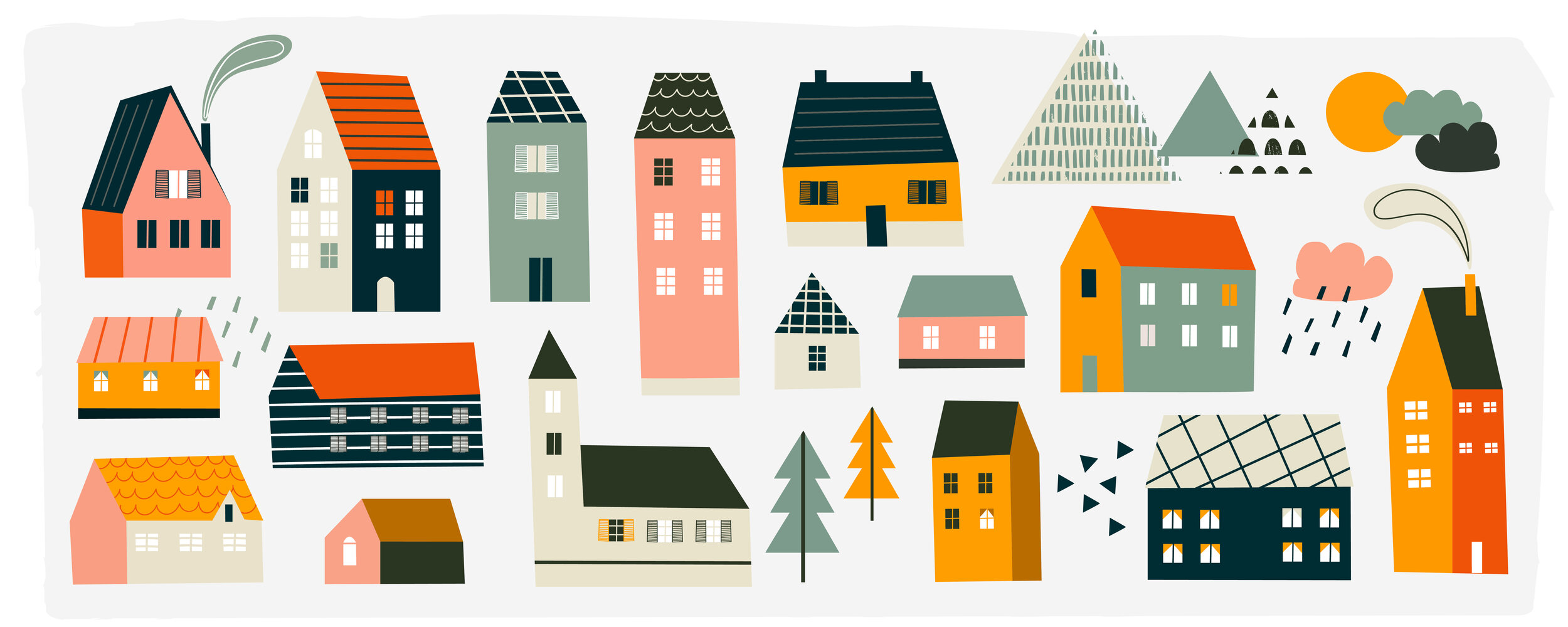There is a broad spectrum of co-purchasing relationships. You and your potential co-purchasers get to decide where you fit on that spectrum, and develop your own shared goals for your home. You might be entering into this process with friends or family members, or with complete strangers.
No matter the intimacy of your existing relationships, it is beneficial to take a step back and reflect on your own expectations for co-purchasing, and to take this opportunity to articulate these expectations clearly with your potential co-purchasers. Identifying incompatibilities in your vision—even with good friends or family—will only help you in the long run.
As you begin to form your purchasing group, we encourage you to consider what your own ideal model for your shared home might be. You may want to share everything except bedrooms, living cooperatively in common spaces, or you may simply want to split up space and create individual private units, gaining equity from a portion of a building. It can be helpful to think about cooperative living models along a spectrum of shared space, activities, and assets. Imagine a series of private units on one end and a fully integrated home on the other.
1. Reflect on Your Co-ownership Preferences
Why are you considering cooperative living?
Example: I want to live in an intentional community, surrounded by like-minded people while also securing a safe and welcoming shelter and building my equity.
Who do you want to live with? Why?
Example: I want to live with eco-conscious people. I want to be able to create a garden and mind our carbon footprint while being able to enjoy organic produce. I want to be sustainable and be surrounded by others who share my passion for the environment.
What kinds of things are you hoping to share as a household? What do you want to do together?
Example: Cooking and gardening would be ideal. I want to be able to socialise over meals and share our company with our love of food. Sharing a kitchen and living area is fine. I prefer a private bathroom and bedroom.
Do you have any needs that you think cooperative living will solve?
Example: I really want to be around people with a passion for sustainability. It’s more difficult to reduce your impact when you’re on your own. I also love company and sharing the burden of financials.
What can’t you live without?
Example: I can’t live without my garden. I love growing fruit, vegetables and herbs that I can use in my cooking!
What questions do you have about living together that you would like to bring up with your co-purchasing group?
Example: What happens if something drastic in life changes? How will the household respond to individual needs and circumstances? What furniture and appliances are people interested in bringing?
Decide on Your Personal Wants and Dreams
In order to find compatible co-purchasers, it’s important to first explore your own expectations of your potential co-ownership real estate purchase and future home. The aim is to generate a basic outline of your needs and wants and dreams across a variety of criteria. Fill out any that apply and add your own. Get creative and be as detailed as you can. This is the space of brainstorming and possibility, and you can consider this a sketch of your ideal home.
| My | Needs | Wants | Dreams |
| Budget | |||
| Down Payment | |||
| Monthly Payments | |||
| Utilities | |||
| Desired Equity | |||
| Other | |||
| Location | |||
| Neighbourhood Range | |||
|
Neighbourhood Character
|
|||
| Public transport access | |||
| Walkability | |||
| School board areas | |||
| Other |
Once you’ve completed this exercise, get ready to get creative about co-ownership!
Looking for Co-Owners?
Try Our Matchmaking Service!
How Do You Establish Your Purchasing Group?
Click on the sections below to learrn more.
What Do You Want?
What are all the Steps to Becoming a Co-owner?
Click on the links below for all the blog articles related to each step.
“Spaces and homes can be changed, but goodwill
and family relationships are precious. Anyone thinking about co-ownership in real estate should consult a lawyer
about legacy planning before buying anything.”































